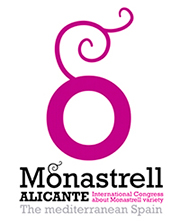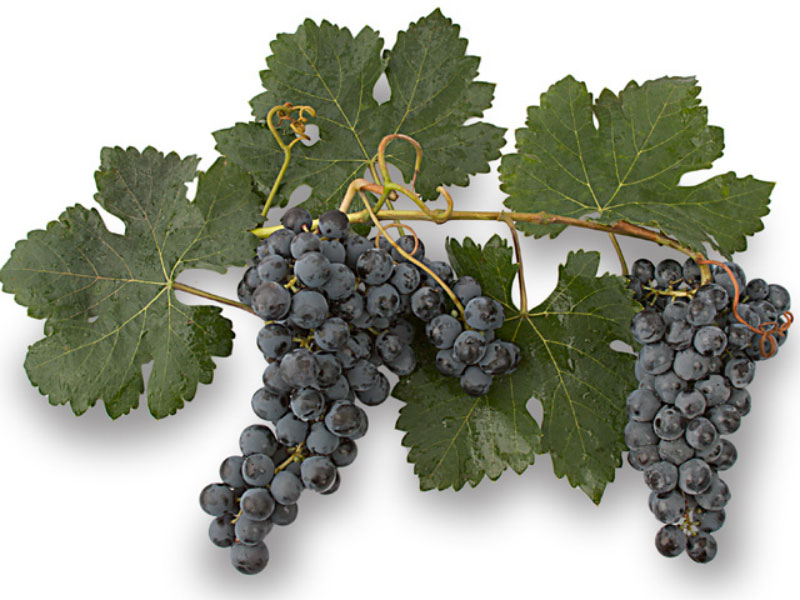Vitis Monastrell, Heart of the Mediterranean
The Monastrell vine (usually known in English as Mourvedre) is a red wine grape variety with a long cycle and originally grown in southern regions. It’s a classic Mediterranean grape variety with a name that harks back to its Hellenic origins. In the late 14th century it was already known as Monastrell here in Spain and was cultivated in the L’Horta d’Alacant region, as mentioned by Eiximenis, as well as in L’Emporda, Mallorca and Camp de Morvedre (Sagunto). This Mediterranean variety needs to be near the sea and this is why it is never grown more than 100 kilometres away from the coast on the other side of the plains and high plateaus, or at least very rarely and with unsatisfactory results. In Spain, the vineyards were concentrated around the Alicante hinterland, from where its cultivation expanded. In addition to the Alicante DOs and the excellent Vinalopó valley (from Novelda to Villena), the variety can be found producing some great wine in the DOs of Yecla, Jumilla and Bullas. Monastrell is an unusual and distinctive vine, and in spite of coming from a wide range of landscapes such as Alicante and Bullas, as well as from different climates like Jumilla and Empordà, the grapes produce red wines that are smooth, noble, generous, ripe, fruity, warm and voluptuous.
The great wine expert Luis Hidalgo talks about their erect bearing, vigorous stem, downy tip and leafy shoots. He also remarks on their medium-sized truncate cuneiform (wedged) shape and dark green colour. The grapes on this vine variety are beautifully expressive, of medium size and blue in colour (although when fully ripe they tend to become bluish-black) with a fair amount of pruinescence (this is one of the things that makes them so special) and nicely rounded. The bunches themselves are another very distinctive feature of Monastrell, being medium sized and very compact. The greatest concentration of vineyards can be found in the region of Murcia (Jumilla is the DO with the largest number of hectares of Monastrell) and the Community of Valencia, where in Alicante the variety stands head and shoulders above the rest for the quality and diversity of its fruit. In Valencia, apart from being called Monastrell, the variety is also known as alcayata, gayata, xurret, garrut, mataró, negraleja, reina, ros, veremea, veremta and vermeta, all local names that confirm its longstanding relationship with the region. It is also known as “Murvedre” here, although some experts argue that there is a difference between this and Monastrell. However, Pierre Galet in his excellent work Dictionnaire encyclopédique des cépages lists the variety as Mourvedre rather than Monastrell (for which there is no entry). The great botanist describes Mourvedre as Cépage noir d’origine espagnole largament cultivé en France and also cites its alternative names, including those of “Monastrell, Garrut and Mataro”. The vines are also grown in California and New Zealand under the name of Mataro. The variety is known as Mourvedre in Provence, in Languedoc-Roussillon and in the Rhône, and Galet reports that it is “largement cultive en France”.
But Monastrell’s biggest virtue is that the grapes are extremely prolific and produce a range of fantastic different wines. They are used to produce young and aged wines, fresh fruity rosés, vintage reds aged long enough to attain the wonderful Fondillon de Alicante, plus cava. Monastrell has been producing excellent rosé cava ever since this wine was first introduced. Also planted in the Penedés region, Monastrell was one of the few red wines to survive when this wine-producing area switched from growing red to white grapes in 1870 for cava. Monastrell must be harvested at peak ripeness (between the feast days of Pilar and St. Teresa, in other words between 12 and 15 October) and for cava it should be picked early, young, fresh and acidic to get a good rosé virgin fermented base cava. Monastrell was already a leading variety alongside Xare·lo, Perellada, Macabeo and Subirat Parent in the development of the Sparkling Wines Regulatory Board 50 years ago; together with Grenache, it was the red variety that gave rise to the Cava DO. So, Monastrell with its generous largesse, its intense, spicy and voluptuous reds, unforgettable rosés, natural rosé cava, and the legendary Fondillon, is an asset of Mediterranean cultural heritage and of the Spanish and French DOs and AOCs across the Mediterranean Arc. Like the Mediterranean tamarisk, the kingdom of Monastrell in the south-eastern Iberian peninsula provides a landscape and an ethos for global wine culture and its most civilised world view.
Joan C. Martin
Writer and wine expert
Valencia, October 2015


























